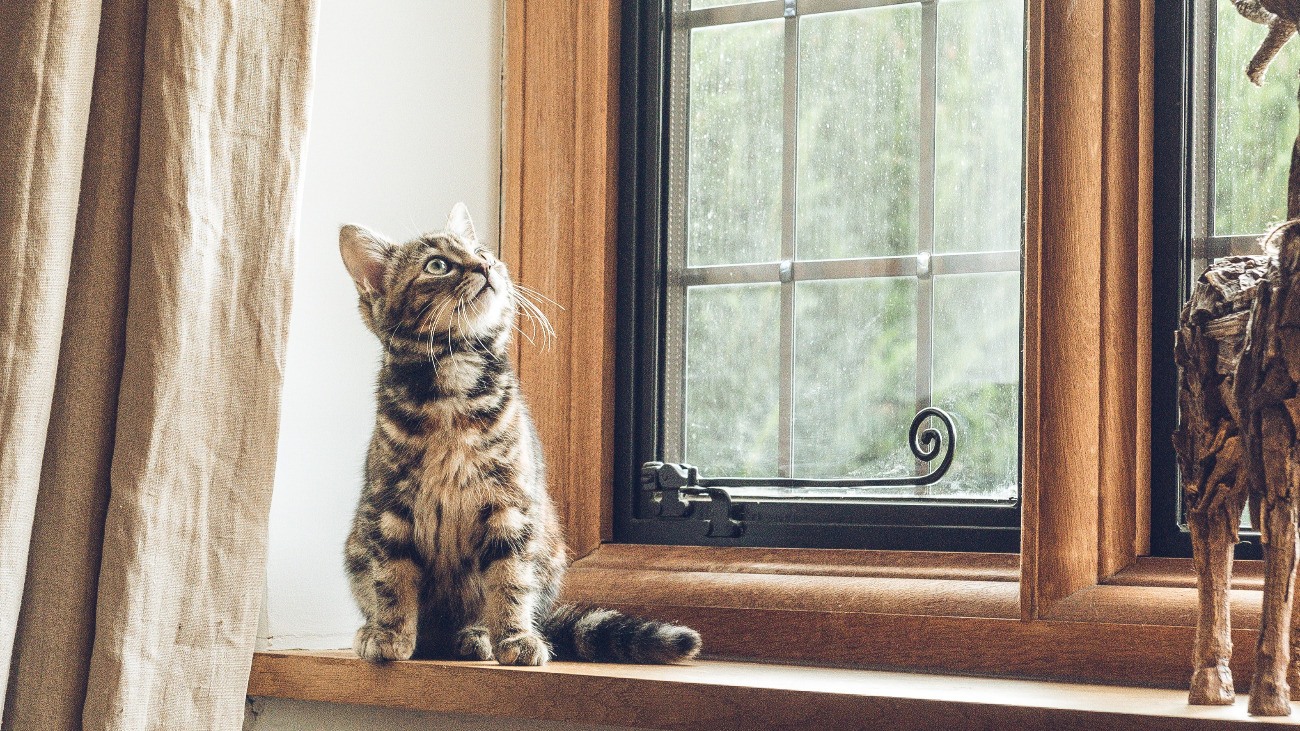As we all know most cats have hair, and when it comes to cat dandruff, for some cats, the struggle is real.
The good news is that in itself, cat dandruff is not a serious condition. The bad news is that sometimes cat dandruff can signal a bigger problem that has nothing to do with hair at all.
What is cat dandruff?
Cat dandruff results when dead, dry skin cells accumulate and then flake off a cat’s skin. These dead skin cells get caught in the fur and are seen as ‘cat dandruff’.
Dander is often mistaken for dandruff. Dander is when skin cells die and are shed normally. Read: dander in cats is normal.
In contrast, cat dandruff occurs when a cat doesn’t properly groom, or when the skin is abnormally dry, which can occur in some high and dry areas of the country, such as the Rockies.
When is cat dandruff a problem?
If your cat’s dandruff is mild and/or intermittent, then you may not need to do anything about it. However, if cat dandruff is happening because your cat is dry and itchy, there is possibility that your cat could scratch himself raw.
Many things can make a cat itchy, including seasonal allergies, food allergies, bacterial infections, fungal infections, and external parasites including fleas, ticks, and mites.
In addition to making your cat uncomfortable, dry and itchy skin is more vulnerable to bacterial or fungal infections.
If you notice your cat’s skin is red, irritated, swollen, if your cat is excessively scratching, chewing, or pulling out hair, then it is time to get some help.
Make an appointment with your local veterinarian and get your cat checked out.
Cat dandruff with mats

If you notice that your cat is having dandruff and is matted, there is possibility that your cat isn’t grooming enough. Healthy cats meticulously groom themselves daily, and should not have any mats and very little dandruff.
Very long haired breeds may need brushing help from you to manage their hair.
If your cat normally has a healthy haircoat, but you are noticing dandruff and mats, cat dandruff can be a signal that there are bigger problems under the hood.
Cats that feel sick groom less than normal, resulting in mats, cat dandruff, and a generally unkempt look to the haircoat. Cats that have joint pain from arthritis or cats that are overweight may groom less than normal, resulting matting and cat dandruff.
Walking cat dandruff
If your cat has dandruff, take a close look. Does the dandruff appear to be moving? If so, then your cat may be infested with a mite named Cheyletiella.
The unofficial name for Cheyletiella is ‘walking dandruff’ because the mite looks like a piece of dandruff that moves! This mite can and will bite humans, leaving little red marks.
Walking cat dandruff is easily treated with anti-parasite medication prescribed by your veterinarian.
Other medical conditions that can cause cat dandruff
Excessive dandruff can be seen in certain hormonal conditions, including diabetes mellitus, hyperthyroidism, and cushing’s syndrome.
If your cat’s dandruff is accompanied by additional signs, such as drinking more and peeing more, increases in appetite, excessive vocalization, aggression, or changes in weight, then there may be something more going on with your cat than just dandruff. A conversation with your veterinarian is warranted.
Another medical condition that can mimic cat dandruff is seborrhea, which is a genetic defect that can cause excessive dandruff, oily scale, and predispose a cat to skin infections and matting.
Seborrhea is easily treated with medicated cat dandruff shampoo and oral supplementation with omega 3 fatty acids, as recommended by your veterinarian.
When it comes down to it, we all want the best for our cats. While cat dandruff can be annoying, it’s usually not an emergency. Having said that, you now know that cat dandruff can be a signal to pay more attention to your cat’s overall health.
With the help of your local veterinarian, most causes of cat dandruff can be overcome and managed, and your cat’s beautiful haircoat and well-being can be restored.
Did you find this article helpful?
